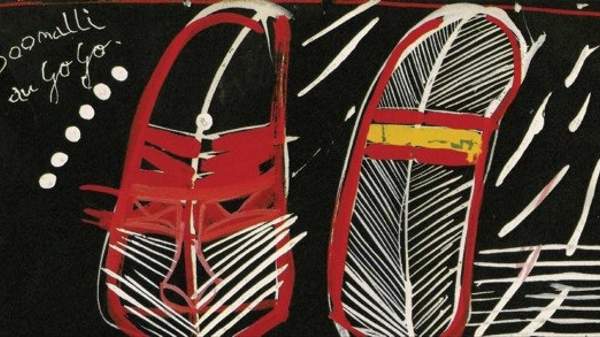Overview
On the 25th November, 1987, ten artists came together for a group exhibition in Meagher Street, Chippendale, called “Boomalli Au Go Go”. This is where the story of “Ripple Effect”, curated by Keith Munro, starts: with the formation of what is not just one of Australia’s most enduring artists’ collective, but one of the country’s most important spaces and groups of Aboriginal artists.
It’s a story that’s still unfolding. Since that first exhibition, the artists - Bronwyn Bancroft, Euphemia Bostock, Brenda L Croft, Fiona Foley, Fern Martins, Arone Raymond Meeks, Tracey Moffatt, Avril Quaill, Michael Riley and Jeffrey Samuels - have forged their own careers and joined the Australian art canon. Boomalli itself - as a space and a cooperative of like-minded artists - has evolved and endured across locations, hauled itself out of debt and dodged bureaucratic red tape. It’s a space that is amorphous as it is influential.
Although much of the large state galleries' collections have, until recently, focussed on Western Desert art as the principal example of Indigenous art, “Ripple Effect” takes us to the limit of the diversity of the media, themes and disciplines Aboriginal artists are working in. Munro says his curatorial directive was to voice “an interesting conversation between the beginning of Boomalli’s history and the present. In the last twenty-five years, the artists have branched out to explore new media and scale, and become bold and confident” in their respective fields.
And so, “Ripple Effect” sweeps across painting, photography and works on paper; installation, moving image and print media. Moffat’s spliced, diced video clippish Others sits alongside Bancroft’s Galaxy Gateways, an abstract painting that allows the eyes to slide and wander. Foley’s photo etching and collage photography, Survival, faces Bostock’s more traditional, expressive cotton screen print, Possum Skin. Across from a wall of Boomalli’s early exhibition posters is a collection of ephemera - notes, archives and photographs that document Boomalli’s rich living history. Together, it all makes sense. “All those threads are part of this journey of Boomalli - the genesis of the space and the practices of the ten founding members,” says Munro. Despite, or because, of this diversity, Boomalli has provided a common place for the common narratives of the ten artists.
All told, the exhibition is startlingly contemporary. “Ripple Effect” is not just a 25th anniversary retrospective, but a demonstration of how Aboriginal artists are intervening into the art world, bringing the weight of their traditions into a contemporary framework. The show looks outward rather than backward, balancing country, culture and lore with dynamism, regeneration and innovation. “Ripple Effect” is a new part of the living history of a community, its people and events, and the exchanges and dialogues that it has sparked, a history that cannot be contained in the artworks themselves.
Image by Fernanda Martins, Avril Quaill and Jeffrey Samuels, from original 1987 Boomalli Exhibition, Boomalli Au Go Go.
Features
Information
When
Friday, November 23, 2012 - Sunday, January 20, 2013
Friday, November 23, 2012 - Sunday, January 20, 2013
Where
Boomalli Aboriginal Artists' Cooperative55 - 57 Flood Street
Leichhardt
